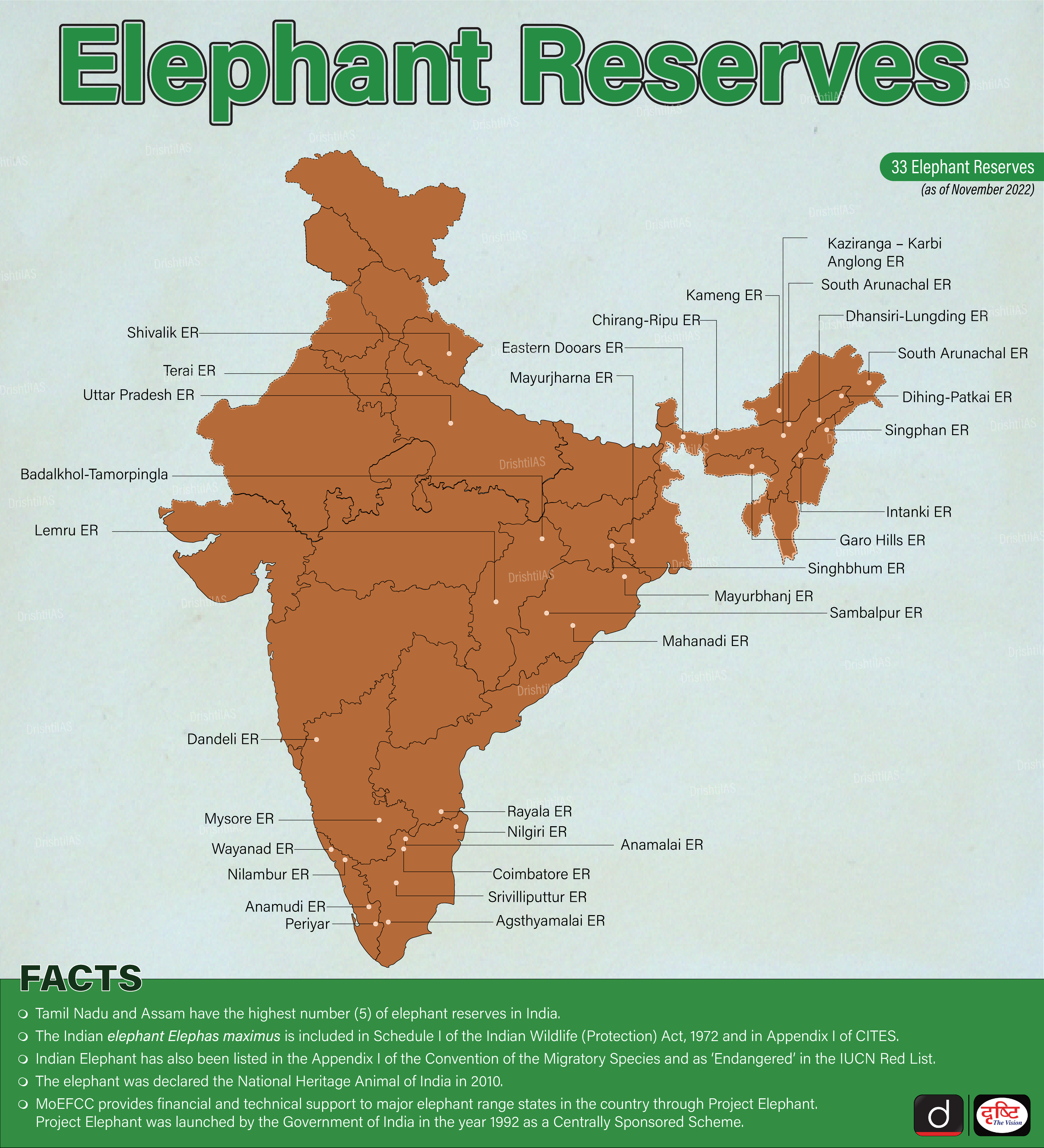Infographics
Science & Technology
Directed Energy Weapons and Hypersonic Weapons
For Prelims: Directed Energy Weapons (DEWs) and Hypersonic Weapons features
For Mains: Significance of Directed Energy Weapons (DEWs) and Hypersonic Weapons
Why in News?
Recently, India’s Air Chief Marshal highlighted the need to push the development of Directed Energy Weapons (DEWs) and Hypersonic Weapons and integrate them into its airborne platforms to get the desired range and accuracy.
What are DEWs and Hypersonic Weapons?
- About:
- In layman's parlance, a directed-energy weapon damages or destroys its target using focused energy by means of lasers, microwaves or particle beams.
- Example – Microwave weapons, Lasers weapons, drone defence systems etc.
- A hypersonic weapon is one that can hit its target five to ten times (Mach 5 to Mach 10) the speed of sound.
- In layman's parlance, a directed-energy weapon damages or destroys its target using focused energy by means of lasers, microwaves or particle beams.
- Advantages of DEWs over Conventional Ammunitions:
- DEWs, particularly lasers, have high precision, low cost per shot, logistical benefits and low detectability.
- They transmit lethal force at the speed of light (about 300,000 kilometers per second)
- Their beams are not affected by the constraining effects of gravity or atmospheric drag.
- Their effects can be tailored by varying the type and intensity of energy delivered against targets.
- Disadvantages:
- Limited Range: Most DEWs have limited range, and their effectiveness decreases rapidly as the distance between the target and the weapon increases
- High Cost: DEWs and hypersonic weapons can be expensive to develop and manufacture, and the cost may not be justified by their effectiveness in some situations.
- Countermeasures: DEWs can be countered by using reflective materials or other countermeasures, which can reduce their effectiveness.
- Arms Race: The development of hypersonic weapons and DEWs by one country leads to an arms race, as other countries seek to develop their own hypersonic weapons in response. This can lead to increased tensions and instability.
- Significance for India:
- The application of these technologies in the aerospace industry can transform the way wars will be fought enabling India to produce cutting edge platforms, weapons, sensors, and networks essential to fight and win a future war.
- DEWs and Hypersonic Weapons could act as a deterrent against hostile nations such as China, Pakistan by increasing India’s defence capabilities.
- Other Countries with DEWs:
- Russia, France, Germany, the United Kingdom, Israel, and China are reportedly among countries which have programmed to develop DEWs or Laser Directed Energy Weapons and militaries of several countries have also employed them.
- Earlier, US also accused Cuba of carrying out sonic attacks (Havana Syndrome)
What are the India’s DEWs and Hypersonic Technology Projects?
- 1KW laser Weapon: DRDO has tested a 1KW laser weapon which hit a target 250m away.
- Directionally Unrestricted Ray-Gun Array (DURGA) II: DRDO has initiated a project DURGA II, which is a 100-kilowatt lightweight DEW.
- Hypersonic Technology Development: Hypersonic technology in India has been developed and tested by both DRDO and ISRO.
- In 2021, DRDO successfully flight-tested the Hypersonic Technology Demonstrator Vehicle (HSTDV), with the capability to travel at 6 times the speed of sound.
- India is also developing an indigenous, dual capable (conventional as well as nuclear) hypersonic cruise missile as part of its Hypersonic Technology Demonstrator Vehicle Programme.
Way Forward
- The concept of Atmanirbharta or self-reliance in defence should encompass evolving home-grown designs and development capabilities by utilizing the Indian defence.
- There is a need to increase investment in defence research and development to boost our defence capability.


Indian Polity
Special Courts
Prelims: Special Courts, Supreme Court, Scheduled Castes and the Scheduled Tribes (Prevention of Atrocities) (PoA) Amendment Act, 2015.
Mains: Special Courts.
Why in News?
Recently, the Supreme Court (SC) has suggested a State-specific approach to setting up special courts for speedy trial of legislators.
- The SC said that a "one-size-fits-all" approach may not resolve the problem of long pendency of criminal cases involving MPs and MLAs because the burden of cases is different for each state.
What is the Background?
- In 2017, the SC had ordered that special courts be set up across the country to fast-track the long-pending trials of lawmakers.
- Following this, 12 special courts were set up across 11 States exclusively to try sitting MPs and MLAs.
- In September 2020, an SC-appointed amicus curiae (friend of the court), in his two reports, highlighted that despite the best efforts by the court to constitute special courts for trying cases against legislators, close to 4,442 criminal cases involving 2,556 sitting members of Parliament (MP) and members of legislative assemblies (MLAs) are pending.
- These cases have now crossed the 5,000-mark, with 400 of them concerning heinous offences.
What is a Special Court?
- About:
- A Special Court is a court with constrained purview, that manages a specific field of law as opposed to a specific regional ward. In India, these courts are established under the Special Courts Act of 1979.
- In India, there are various special courts that have been established to deal with specific types of cases. These courts have been set up to provide speedy justice and to address the unique legal challenges associated with certain types of cases.
- Jurisdiction:
- Special jurisdiction is the Courts’ jurisdiction over certain types of cases such as bankruptcy, claims against the government, probate, family matters, immigration, and customs, or limitations on courts’ authority to try cases involving maximum amounts of money or value. Special jurisdiction is also known as limited jurisdiction.
- Special Courts only hear cases in a very narrow jurisdiction and the judges serve for a specific term, while the constitutional court’s main authority is to rule on whether laws that are challenged are unconstitutional, Example- whether they conflict with constitutionally established rights and freedoms.
- Special jurisdiction is the Courts’ jurisdiction over certain types of cases such as bankruptcy, claims against the government, probate, family matters, immigration, and customs, or limitations on courts’ authority to try cases involving maximum amounts of money or value. Special jurisdiction is also known as limited jurisdiction.
What are the Other Related Initiatives?
Way Forward
- As politics dominates the bureaucracy, and reins in business, civil society and the media, the country needs governance that is free of the “criminal” virus.
- Ensuring prosecution with public pressure may help. If one political leader is hauled up for giving tickets to large numbers of tainted candidates, something positive may happen.


Governance
Central Bureau of Investigation
For Prelims: Delhi Special Police Establishment (DSPE) Act, Santhanam Committee on Prevention of Corruption, Prevention of Corruption Act
For Mains: Issues Related to CBI and Recommendations
Why in News?
The Parliamentary Committee on Personnel, Public Grievances, Law and Justice, in view of withdrawal of general consent for CBI probe by many states, has said that the existing law governing the CBI has "many limitations" and needs to be replaced with a new legislation to define its status, functions, and powers.
What is the Central Bureau of Investigation (CBI)?
- About:
- The CBI was established in 1963 and is governed by the Delhi Special Police Establishment (DSPE) Act.
- It was established on the recommendations of Santhanam Committee on Prevention of Corruption (1962–1964).
- Currently, CBI functions under the Department of Personnel, Ministry of Personnel, Pension & Public Grievances of the Government of India.
- The CBI was established in 1963 and is governed by the Delhi Special Police Establishment (DSPE) Act.
- Functions:
- Investigating cases of corruption, bribery and misconduct of Central government employees under the Prevention of Corruption Act against Indian public officials, public sector undertakings, corporations, and bodies that are owned or controlled by the Indian government.
- Investigating cases relating to infringement of fiscal and economic laws, that is, breach of laws concerning export and import control, customs and central excise, income tax foreign exchange regulations.
- Example: Fake Indian Currency Notes, Bank Frauds, Import Export & Foreign Exchange violations etc.
- Issues:
- CBI v/s State Police:
- CBI investigation in a particular state is subjected to approval by the State Government.
- The ruling party in a state, sometimes genuinely and many times on flimsy grounds, has denied permission to the CBI to investigate matters, thereby limiting the extent of investigations.
- Overlapping/Duplication:
- Along with state police forces, the Special Police Establishment (a division of CBI) enjoys the concurrent powers of investigation and prosecution for offences that sometimes lead to duplication and overlapping of cases.
- Political Interference:
- The Supreme Court of India has criticised the CBI for excessive political interference in its functioning, calling it a "caged parrot speaking in its master's voice".
- CBI v/s State Police:
What are the Findings and Recommendations of the Parliamentary Committee?
- Findings:
- Withdrawal of General Consent:
- 9 states have withdrawn the general consent required for any investigation by the CBI, making the existing law governing the CBI ineffective.
- Vacancies:
- Vacancies in the CBI are not being filled up at the required pace, hampering the quality of investigation and ultimately impacting the effectiveness and efficiency of the agency.
- A total of 1,709 posts are vacant in the CBI against its sanctioned strength of 7,295.
- These vacancies in the cadres of executive ranks, law officers and technical officers will unquestionably increase the pendency of cases, hamper the quality of investigation and ultimately impact the effectiveness and efficiency of the agency.
- Withdrawal of General Consent:
- Recommendations:
- Redefining the Status of CBI:
- The Committee recommends enacting a new law to define the status, functions, and powers of the CBI and to lay down safeguards to ensure objectivity and impartiality in its functioning.
- Filling Up Vacancies on Quarterly Basis:
- The Committee recommends the Director of CBI to monitor the progress made in filling up vacancies on a quarterly basis and take necessary measures to ensure that the organisation is sufficiently staffed.
- Reduce Dependence on Deputation:
- CBI should reduce its dependence on deputationists and strive to recruit permanent staff in the ranks of inspector of police and deputy superintendent of police.
- Case Management System: CBI should maintain a case management system which would be a centralised database containing details of cases registered with it and the progress made at their disposal.
- CBI should also publish case statistics and annual reports on its website to ensure transparency and accountability.
- Details of cases registered with the CBI, the progress made in their investigation, and the final outcome should be made available in the public domain.
- Redefining the Status of CBI:
UPSC Civil Services Examination, Previous Year Question (PYQ)
Q. The jurisdiction of the Central Bureau of Investigation (CBI) regarding lodging an FIR and conducting a probe within a particular state is being questioned by various States. However, the power of the States to withhold consent to the CBI is not absolute. Explain with special reference to the federal character of India. (2021)


Important Facts For Prelims
Guillotine in Indian Legislative
Why in News?
The ongoing stalemate in Parliament has led to speculation that the government may guillotine the demands for grants and pass the Finance Bill without any discussion.
- This has led to confusion and questions about what exactly guillotine means in legislative parlance.
What is Guillotine?
- The term guillotine originally referred to an apparatus designed for executions by beheading.
- It was introduced in France during the French Revolution to make capital punishment more reliable and less painful.
- In legislative parlance, guillotine means to bunch together and fast-track the passage of financial business. It is a fairly common procedural exercise in Lok Sabha during the Budget Session.
- Once the guillotine is applied, any remaining demands for grants are put to vote without further discussion.
- This ensures that the budget is passed within the allocated time, and the government can continue its work without any delay.
What is the Guillotine Parliamentary Procedure?
- After the Budget is presented, Parliament goes into recess for about three weeks, during which time the House Standing Committees examine demands for grants for various Ministries and prepare reports.
- After Parliament reassembles, the Business Advisory Committee (BAC) draws up a schedule for discussions on the Demands for Grants.
- Sometimes, given the limitation of time, the House cannot take up the expenditure demands of all Ministries; therefore, the BAC identifies some important Ministries for discussions; ususally the Ministries of Home, Defence, External Affairs, Agriculture, Rural Development and Human Resource Development.
- Once the House is done with these debates, the Speaker applies the “guillotine”, and all outstanding demands for grants (discussed or not) and undiscussed clauses of a bill/resolution are put to vote at once in order to save time.


Important Facts For Prelims
DNA Profiling of Elephants
Why in News?
While celebrating the 30 years of ‘Project Elephant’, the MoEF&CC has announced the completion of the DNA (Deoxyribonucleic Acid) Profiling of 270 elephants, aiming at ensuring better protection.
What is the Project?
- The DNA profiling was started in August 2022 for Gaj Soochna Mobile Application for forest officials.
- DNA profiling is the process where a specific DNA pattern, called a profile, is obtained from a sample of bodily tissue.
- The DNA profiling will act as the ‘Adhaar card of captive elephants’.
- The captive elephants had earlier been chipped electronically, but the method was not a success.
- With the mobile app, forest officers can identify each elephant and track it and therefore its transfer, which often happens in the case of captive elephants, can be recorded.
- After the elephant profiling, more focus can be put on elephant care – with unique information about elephants.
- Unlike Project Tiger, the Project Elephant looks at the welfare and health of captive elephants as well.
What is Project Elephant?
- It was launched in 1992 as a Centrally-Sponsored Scheme with an aim to protect elephants and improve their habitat and corridors, reduce Human-elephant conflict and ensure their welfare.
- As many as 33 elephant reserves, spanning 80,777 sq km, have been notified.
- It provides financial and technical support to wildlife management efforts by states for their free-ranging populations of wild Asian Elephants.
- The project aims to ensure the long-term survival of the populations of elephants in their natural habitats by protecting the elephants, their habitats and migration corridors.
- Other goals of Project Elephant are supporting the research of the ecology and management of elephants, creating awareness of conservation among local people, and providing improved veterinary care for captive elephants.
What is the Population of Elephants in India?
- India is home to 20% of the global captive Asian elephant population, but a census of captive elephants is not done regularly.
- India has the largest and the most stable population of Asian elephants, where more than 60% of wild Asian elephants are in India.
- Nilgiri landscape has the largest single population of the endangered Asian elephant anywhere in the world.
- The population of 29,964 elephants as recorded in the last elephant census conducted in 2017 speaks volumes of the passion for wildlife conservation ingrained in Indian culture.
- As per Elephant Census (2017), Karnataka has the highest number of elephants (6,049), followed by Assam (5,719) and Kerala (3,054).
What are the Key Points Related to Elephants?
- Asian Elephants: There are three subspecies of Asian elephant which are the Indian, Sumatran and Sri Lankan.
- Global Population: Estimated 20,000 to 40,000.
- The Indian subspecies has the widest range and accounts for the majority of the remaining elephants on the continent.
- IUCN Red List Status: Endangered.
- Wildlife (Protection) Act, 1972: Schedule I.
- CITES: Appendix I
- African Elephants: There are two subspecies of African elephants, the Savanna (or bush) elephant and the Forest elephant.
- Global Population: Around 4,00,000.
- IUCN Red List Status: Vulnerable.
- Earlier in July 2020, Botswana (Africa) witnessed the death of hundreds of elephants.
- Concerns:
- Escalation of poaching.
- Habitat loss.
- Human-elephant conflict.
- Mistreatment in captivity.
- Abuse due to elephant tourism.
What are Elephant Conservation Efforts?
- Cleaning areas from lantana and eupatorium (invasive species) as they prevent the growth of grass for elephants to feed on.
- Gaj Yatra is a nationwide awareness campaign to celebrate elephants and highlights the necessity of securing elephant corridors.
- The Monitoring the Illegal Killing of Elephants (MIKE) programme, launched in 2003, is an international collaboration that tracks trends in information related to the illegal killing of elephants from across Africa and Asia, to monitor effectiveness of field conservation efforts.
- Even mahouts (people who work with, ride and tend to elephants) and their families play an important part in the welfare of elephants.
- Recently, the Supreme Court (SC) upheld the 2011 order of the Madras High Court (HC) on the Nilgiris elephant corridor, affirming the right of passage of the animals and the closure of resorts in the area.
UPSC Civil Services Examination, Previous Year Question (PYQ)
Prelims
Q. With reference to Indian elephants, consider the following statements: (2020)
- The leader of an elephant group is a female.
- The maximum gestation period can be 22 months.
- An elephant can normally go on calving till the age of 40 years only.
- Among the States in India, the highest elephantpopulation is in Kerala.
Which of the statements given above is/are correct?
(a) 1 and 2 only
(b) 2 and 4 only
(c) 3 only
(d) 1, 3 and 4 only
Ans: (a)


Important Facts For Prelims
Sagar Manthan Dashboard
Why in News?
Recently, the Ministry of Ports, Shipping and Waterways (MoPSW) launched Sagar Manthan dashboard.
What is the Sagar Manthan Dashboard?
- About:
- It is the Real-time Performance Monitoring Dashboard of MoPSW that will monitor and track the progress of their projects.
- This new digital platform has integrated all the data related to the Ministry and other subsidiaries.
- Features:
- Data visualization
- Real-time monitoring
- Improved communication
- Data-driven decision making
- Increased accountability
- Significance:
- The dashboard is a positive development towards Digital India vision.
- It will ensure the timely completion of projects, informed decision-making, increased efficiency & effectiveness of projects
- It will also promote risk management, resource allocation, and progress reporting.
Conclusion
The launch of ‘Sagar Manthan’ Dashboard is a development towards digitalization and transparency in the maritime transport sector which will help in growth of maritime sector in India.


Rapid Fire
Rapid Fire Current Affairs
Pradhan Mantri Ujjwala Yojana
Recently, the Central government extended the grant of a subsidy of Rs. 200 per gas cylinder under the Pradhan Mantri Ujjwala Yojana (PMUY) for another year, benefiting 9.59 crore beneficiaries. The subsidy is credited directly to the bank accounts of eligible beneficiaries. In the wake of sharp increases in international Liquefied Petroleum Gas (LPG) prices due to various geopolitical factors, the government has decided to shield PMUY beneficiaries from high LPG prices. PMUY is a government flagship scheme launched in 2016 by the Government of India with the aim to make LPG available to economically weaker households in India. The scheme aims to safeguard the health of women and children by providing them with clean cooking fuel (LPG).
Read More: Pradhan Mantri Ujjwala Yojana
Radioactive Tsunami
North Korea claims to have tested a nuclear-capable underwater drone named "Haeil," a Korean word meaning tidal waves or tsunamis designed to generate a gigantic "radioactive tsunami". A radioactive tsunami is a speculative phenomenon that could occur if a nuclear explosion occurred underwater. The drone can be deployed from the coast or towed by surface ships and is built to “stealthily infiltrate into operational waters and make a super-scale radioactive tsunami through an underwater explosion" that would destroy naval strike groups and ports.
DigiClaim
DigiClaim is a digitized claim settlement module launched recently under the purview of the Pradhan Mantri Fasal Bima Yojana (PMFBY). With the launch of this module, claims will be disbursed electronically, which will benefit the respective farmers of six states. Insurance claims totaling Rs 1260.35 crore have been disbursed on 23 March 2023 to insured farmers in the states of Rajasthan, Uttar Pradesh, Himachal Pradesh, Chhattisgarh, Uttarakhand and Haryana. The automated claim settlement process will be an ongoing activity to ease all insured farmers’ lives and provide them with a sustainable financial flow and support. Farmers’ claims will be processed directly to their respective bank accounts in a transparent and accountable manner. This technology has been enabled through the integration of the National Crop Insurance Portal (NCIP) and the Public Finance Management System (PFMS).
Read more: Crop Insurance
Abel Prize
Luis Caffarelli has won the 2023 Abel Prize for his contributions to regularity theory for nonlinear partial differential equations, including free-boundary problems and the Monge-Ampère equation. The Abel Prize is a prestigious award in mathematics that recognizes pioneering scientific achievements in mathematics. It is named after Norwegian mathematician Niels Henrik Abel. The Norwegian Parliament established the prize in 2002, and it includes a monetary award of 7.5 million kroner (approximately $720,000) and a glass plaque. It is awarded by the Norwegian Academy of Science and Letters on behalf of the Ministry of Education of Norway.
Read more: Abel Prize










